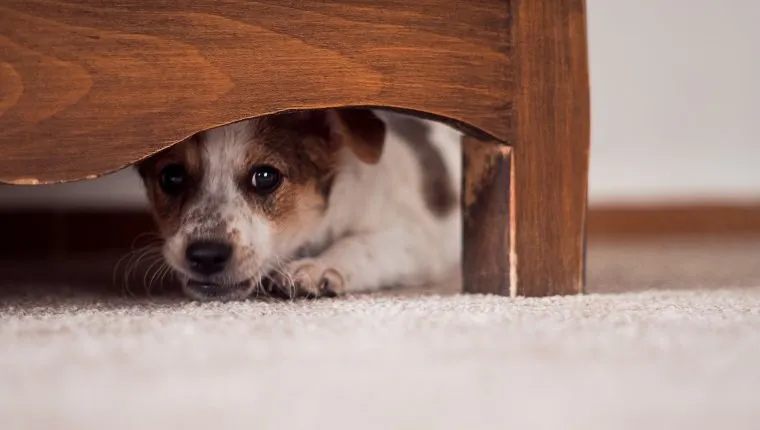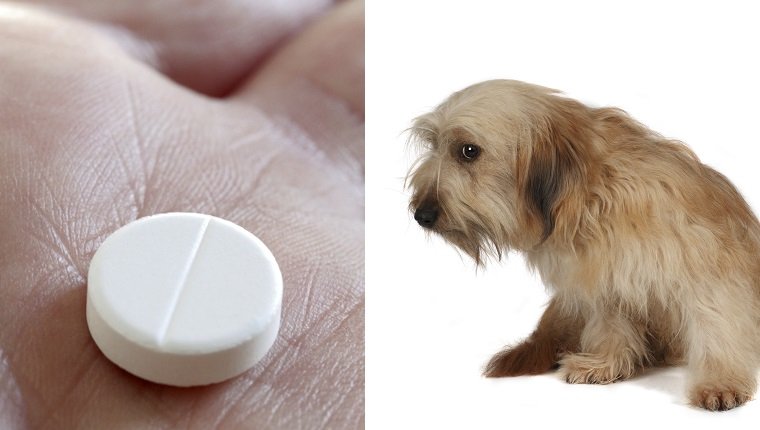Buspirone, also known by the brand name BuSpar, is an anti-anxiety drug that can be used to treat dogs with phobias, abnormal behaviors, or anxious tendencies.
It was designed for humans to replace drugs like diazepam, and it’s often used by veterinarians instead of tranquilizers, which only provide temporary effects and have harsh side effects.
This medication is used as an alternative to other anti-anxiety medicines for dogs because it doesn’t have the same muscle relaxation or sedation effects as other drugs. This allows for dogs to get the benefits of anxiety reduction without the side effects of becoming overly sedated.
If your veterinarian prescribes buspirone or BuSpar for your dog, make sure to follow instructions thoroughly. You can easily order buspirone for your dog online from Chewy’s pharmacy with your vet’s prescription.
Here’s what you should know about the uses, dosage, and side effects of buspirone for dogs.
Uses Of Buspirone In Dogs

Buspirone can be used to treat certain kinds of anxiety in dogs.
It is not very useful in the treatment of separation anxiety, but it is particularly helpful in treating anxiety related to phobias. Fear of thunder or loud noises, fear of strangers, and other fears can be relieved with use of buspirone.
Behaviors related to these fears, such as aggression, can also be curbed in dogs with use of the drug. Additionally, it can be used to help dogs who are left out or ignored by a group of other pets to feel less fearful or aggressive, allowing them to better get along with other animals.
Dosage Of Buspirone In Dogs

The following is a guideline for typical use of the drug in dogs and must not replace your veterinarian’s advice for your individual pet.
The dosage of buspirone that should be given to dogs depends on their weight and their response to the drug.
Small dogs may be given as low as 2.5 mg two to three times per day, while larger dogs may get as much as 15 mg two to three times per day.
It’s important to follow your vet’s instructions closely. They’ll tell you the appropriate dosage and adjust it based on your dog’s response if need be. You should stick to a schedule and give your dog the medication at the same time every day.
It may take weeks or months before you see results, but do not stop administering medication abruptly. If your dog is ready to stop taking buspirone, your vet will give you instructions on how to wean your dog off the drug.
It may take up to two months for effects of the drug to wear off completely after your dog has stopped taking it.
Side Effects Of Buspirone In Dogs

Side effects of buspirone in dogs are usually minimal, though the risk of experiencing them gets higher with extended use.
If you notice side effects in your dog, you should contact your veterinarian. They can give you advice about managing the symptoms and may wish to adjust the dosage.
Here are some side effects you might see in dogs who use buspirone:
- Nausea or loss of appetite
- Headache
- Dizziness
- Agitation
- Increased aggression
- Excitability or restlessness
- Sedation
- Tachycardia or other heart problems
Buspirone can cause complications in dogs who have liver or kidney disease or dogs who are pregnant. Your vet should also be aware of any other medications your dog is taking, as they can react poorly with this drug.
Has your dog ever taken buspirone? Did it work? Let us know in the comments below!









